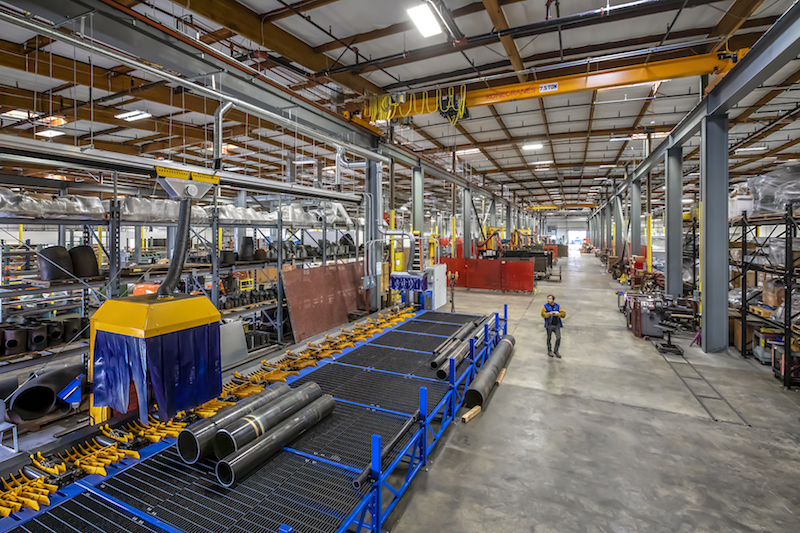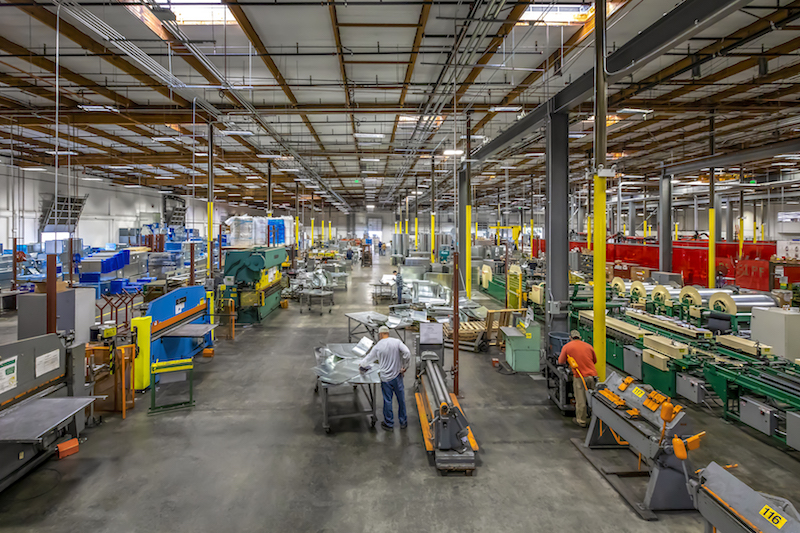It’s no secret that, despite improvements in its employment rate that rose steeply last month, the construction industry still struggles with labor shortages. In fact, 40% of construction companies turn down new projects because they don’t have enough skilled labor, according to the latest USG-Chamber of Commerce Commercial Construction Index, produced with Dodge Data & Analysts and based on responses from a Contractor Panel of more than 2,700 industry decision makers.
Most builders have already revved up their recruitment and training machines to attract and retain workers. Others are leaning into technology to find work-saving solution. Southland Industries, one of the industry’s largest MEP building systems firms, is also focusing on process refinement, training, and technology integration that bring into play, among other things, offsite construction and fabrication, data centralization and virtualization, the intersection of design engineering and detailing, and BIM to improve information delivery.
Judd Fuoto, Southland’s lead solutions analyst, tells BD+C that his large company, with its many priorities, is trying to achieve a balance that aligns its business and technology agendas. Southland is also trying to avoid the trap too many other companies fall for when they dive into new things without defining success or gauging risk.
“There’s a lot of software solutions out there looking for problems,” he says. “And that software often addresses specific things but doesn’t play nice with each other.”
Southland’s methodology is to document its workflow and to let the results prompt process improvements. It has also overhauled its technology governance so that “we’re staying aligned with what’s important and what’s effective.”

Southland's new office space and fabrication facility in Southern California, built by H. Hendy Associates, is laid out to create synergy among processes and worker teams. Hendy even measured the number of steps it would take employees to get to key areas, and designed pathways through the floor plan to support the quickest navigation patterns. The facility also includes a new R&D center. Image: Southland Industries
Fuoto concedes that some measurements so far have been anecdotal, and some are trackable “if we hit intended targets.” But there have been noteworthy gains. By automating its plants’ commissioning Southland has improved worker capacity by an average of 45 minutes per person per day, according to a recent poll with responses from 115 workers in the field.
At the very least, says Fuoto, it’s important for companies in this industry to determine what problems they are trying to solve, and then find the tools needed, instead of “chasing after every shiny gadget” first and then trying to apply them to their company’s operations.
“Will the tool augment or disrupt your process” is what all companies, including Southland, need to keep asking themselves before they make costly investments in software, equipment, or even factories.
Related Stories
| Aug 11, 2010
Gold Award: Eisenhower Theater, Washington, D.C.
The Eisenhower Theater in the John F. Kennedy Center for the Performing Arts in Washington, D.C., opened in 1971. By the turn of the century, after three-plus decades of heavy use, the 1,142-seat box-within-a-box playhouse on the Potomac was starting to show its age. Poor lighting and tired, worn finishes created a gloomy atmosphere.
| Aug 11, 2010
AIA course: MEP Technologies For Eco-Effective Buildings
Sustainable building trends are gaining steam, even in the current economic downturn. More than five billion square feet of commercial space has either been certified by the U.S. Green Building Council under its Leadership in Energy and Environmental Design program or is registered with LEED. It is projected that the green building market's dollar value could more than double by 2013, to as muc...
| Aug 11, 2010
Great Solutions: Technology
19. Hybrid Geothermal Technology The team at Stantec saved $800,000 in construction costs by embedding geothermal piping into the structural piles at the WestJet office complex in Calgary, Alb., rather than drilling boreholes adjacent to the building site, which is the standard approach. Regular geothermal installation would have required about 200 boreholes, each about four-inches in diameter ...







